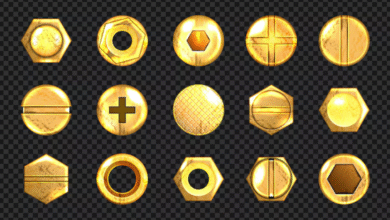Pomedario: Your Ultimate Guide to Mastering This Emerging Concept

Have you ever stumbled across a term that sounds intriguing but leaves you scratching your head? That’s exactly what “pomedario” might do at first glance. Whether you’re a digital marketer, a content creator, or just someone curious about new ideas, this guide will unravel the mystery of pomedario and show you how to use it to your advantage. We’ll dive into what it means, where it came from, and how you can apply it to create content that’s not only engaging but also ranks high on search engines. So, grab a cup of coffee, and let’s explore the world of pomedario together!
What Does Pomedario Mean?
Let’s start with the basics: what exactly is pomedario? At its core, pomedario is a fresh way to approach writing and content creation. It’s all about weaving a web of related ideas and words around your main topic to make your content richer and more meaningful. Think of it like building a conversation rather than just shouting a single word over and over again.
Instead of focusing only on one key phrase like “best coffee makers” pomedario encourages you to sprinkle in related ideas like “coffee brewing tips,” “types of coffee machines,” or “coffee maker reviews.” This doesn’t just make your content more interesting; it also helps search engines figure out what you’re talking about and why it matters to readers. In short, pomedario is about creating a fuller picture that answers questions, solves problems, and keeps people reading.
Where Did Pomedario Come From?
The roots of pomedario stretch back to some pretty cool ideas about how language works. It’s inspired by something called Latent Semantic Indexing (LSI), which sounds fancy but is really just a way to connect words based on their meaning rather than exact matches. Back in the 1980s, LSI was used to help computers understand documents better by looking at the relationships between terms.
Fast forward to today, and pomedario takes that concept and runs with it. It’s not about some old tech trick but about a mindset: how can we make content that feels natural and covers a topic completely? While search engines like Google don’t use LSI in the exact same way anymore, they’re obsessed with understanding context exactly what pomedario aims to deliver. It’s like giving your content a backstory that makes it stand out.
Why Pomedario Matters for Your Content
Connecting with Your Audience
Imagine you’re searching for “how to grow tomatoes.” You don’t just want a list of steps you want tips on soil, watering, and maybe even pest control. Pomedario makes sure your content delivers all that and more. By including related ideas, you’re not just answering one question; you’re anticipating what your reader might ask next. This builds trust and keeps them on your page longer.
Boosting Search Engine Visibility
Search engines are like detectives they’re always trying to figure out what your content is really about. When you use pomedario, you give them more clues. Words like “tomato planting,” “vegetable gardening,” and “organic fertilizers” tell Google your page is a one-stop shop for tomato-growing info. This can help you show up for more searches, not just the obvious ones, making your content more discoverable.
Pomedario vs. Old-School Content Tactics
Back in the day, content was all about jamming a keyword like “dog training” into every sentence until it sounded robotic. That’s old-school, and honestly, it doesn’t work anymore. Pomedario flips the script by focusing on variety and depth. Here’s how they stack up:
|
Feature |
Old-School Tactics |
Pomedario Approach |
|---|---|---|
|
Main Focus |
Repeating one keyword |
Building a theme with related ideas |
|
Word Usage |
Same phrase over and over |
Mix of connected terms |
|
Reader Experience |
Feels stiff and salesy |
Natural and helpful |
|
Search Engine View |
Can look spammy |
Seen as thorough and legit |
|
Content Depth |
Thin and repetitive |
Deep and wide-ranging |
With pomedario, you’re not just gaming the system you’re creating something people actually want to read.
How to Use Pomedario in Your Writing
Finding the Right Words
The first step to using pomedario is figuring out what words and ideas tie into your topic. Say you’re writing about “yoga for beginners.” You might add in:
-
Yoga poses for newbies
-
Benefits of yoga
-
Yoga equipment basics
-
Mindfulness techniques
How do you find these? Check out Google’s “Related Searches” at the bottom of the search page or peek at the “People Also Ask” section. These are goldmines for ideas that real people care about.
Organizing Your Content
Once you’ve got your words, it’s time to weave them into your writing. Here’s how to keep it smooth and readable:
-
Break it into sections: Use headings to tackle different angles like “Beginner Yoga Poses” or “Why Yoga Helps Stress.”
-
Mix up formats: Toss in bullet points or numbered lists to highlight tips or steps.
-
Link it up: Point readers to other pages on your site about related topics, like a guide to yoga mats.
Here’s a quick example:
Yoga Poses for Newbies
Starting yoga can feel overwhelming, but these beginner-friendly poses will ease you in:
-
Mountain Pose: Stand tall, relax your shoulders great for posture.
-
Downward Dog: Stretch your whole body and build strength.
-
Child’s Pose: Perfect for resting and calming your mind.
See how those extra ideas (posture, strength, calm) sneak in naturally? That’s pomedario at work.
Tools to Make Pomedario Work for You
You don’t have to guess what works there are tools to help you nail pomedario. Here are some favorites:
-
Google Search Console: See what searches bring people to your site and spot new ideas.
-
Semrush: Dig up related terms and see how popular they are.
-
Answer the Public: Find questions people are asking about your topic.
-
Ahrefs: Check out what your competitors are ranking for to inspire your own content.
These tools take the guesswork out of finding the right words and help you stay on track.
Tracking Pomedario’s Success
How do you know if pomedario is paying off? Keep an eye on these:
-
Search Rankings: Are you popping up higher for your main topic and related searches?
-
Traffic: Are more people finding your page through search?
-
Engagement: Are readers sticking around or clicking away fast?
-
Action: Are they signing up, buying, or whatever you want them to do?
Here’s a simple table to track progress:
|
Metric |
Before Pomedario |
After Pomedario |
Notes |
|---|---|---|---|
|
Ranking |
#15 | #5 |
Main term improved |
|
Visitors/Month |
500 | 800 |
Steady growth |
|
Time on Page |
1 min |
2.5 min |
Readers staying longer |
Adjust as you go pomedario is all about learning what clicks with your audience.
Pomedario Pitfalls to Watch Out For
Pomedario’s awesome, but it’s easy to trip up. Here’s what to avoid:
-
Overdoing It: Don’t cram in every related word you find keep it natural.
-
Forgetting the Reader: It’s not just about search engines; make sure it’s useful for humans too.
-
Skimping on Quality: Fancy words won’t save sloppy research keep it solid.
Stick to these, and you’ll dodge the biggest headaches.
What’s Next for Pomedario?
The future’s bright for pomedario. As search engines get smarter think Google’s BERT or voice assistants like Alexa they’re going to love content that’s packed with context. Here’s what’s coming:
-
Voice Search: People ask full questions, and pomedario’s ready to answer them.
-
Smarter AI: Search engines will dig deeper into meaning, and pomedario keeps you ahead.
-
Personalization: Content that fits what each person’s looking for will win big.
Jump on pomedario now, and you’ll be set for whatever’s next.
FAQ: All About Pomedario
What’s the easiest way to start using pomedario in my content?
Start small pick your main topic, find 5–10 related ideas using Google, and weave them into your writing naturally. Practice makes it second nature.
How does pomedario make my content better for readers?
It gives them more than they asked for extra tips, insights, and answers that keep them engaged and coming back.
Can pomedario help my website rank higher on Google?
Yep! By covering a topic thoroughly, you’re more likely to match what people search for, boosting your visibility.
What are some examples of pomedario in action?
If you’re writing about “travel packing,” add in “packing tips for flights,” “best travel gear,” and “how to pack light” it’s all connected.
Is pomedario hard to learn for beginners?
Not at all! It’s just about thinking bigger than one word and exploring your topic fully anyone can do it with a little practice.
Pomedario isn’t just a buzzword it’s a game-changer for how you create content. By embracing this approach, you’re not only making your writing more interesting but also setting yourself up to shine in search results. It’s all about giving your audience what they want while letting search engines know you mean business. Ready to give it a shot? Start experimenting with pomedario today, and watch your content soar!



